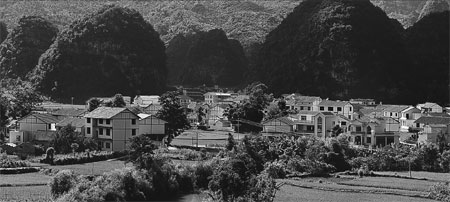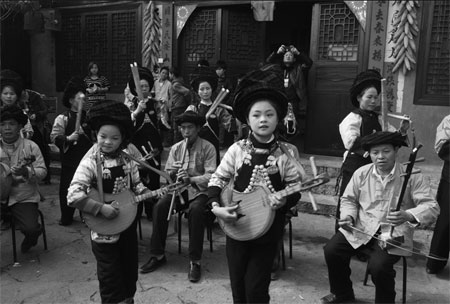Countryside charm
Updated: 2014-04-10 07:13
By Zeng Jun (China Daily USA)
|
|||||||||
Guizhou's bucolic scenery offers a pleasant escape for harried city dwellers and an economic lifeline for local communities, Zeng Jun reports.
Like most women from the mountainous Nahui village who work the farmland in Southwest China's Guizhou province, Yang Chaozhen, 60, looks much older than her age.
Yang lives with her husband while her children and grandchildren work in Guangdong province.
Formerly, they had to work from dawn to dusk to earn a living, but since 2010, when the couple started to grow rape flowers in the scenic area of the Wanfenglin Peaks Forest, their lives changed for the better.
Wanfenglin Peaks Forest is a national 4-A tourist destination, located about 5 kilometers from Xingyi city, capital of Qianxinan prefecture in Guizhou province. It is famous for its rape flower fields and fresh air. The name in Chinese suggests it is a "forest surrounded by thousands of mountains." (There are five tourist attraction rating categories of China, with 1-A the lowest level and 5-A the highest.)
"We can get oil from the rape seeds, and the local government offers some allowances. We can earn up to 20,000 yuan ($3,200) every year, which is enough for a decent life," Yang says.
Nahui village is also known for its Bouyei, Miao and other ethnic cultures. The local government set up an office to boost rural tourism in 2010 and encouraged villagers to plant rape flowers in the area by providing free seeds, fertilizers and extra subsidies.
"Rape flowers can improve the Wanfenglin area's ornamental value and increase the incomes of villagers," says Cai Guohong, a local government official.
The oil extracted from rape seeds is very popular among tourists and is a special product made in a traditional way. Last November, Nahui village was named one of the Top 10 beautiful villages in China, on a list released jointly by the Ministry of Agriculture, the Ministry of Housing and Urban-Rural Development, and the China National Tourism Administration.
"There are many mountains in the world, but you will find a peak forest only here," Xu Xiake, a noted geographer, said, after visiting Wanfenglin. Xu is a scholar of the Ming Dynasty (1368-1644), who traveled around the country to conduct surveys.
The beautiful view has become the main tourist draw and has started to change the lives of the villagers.
The first China Wanfenglin Summit on Beautiful Villages was held in Xingyi in February 2013, when government officials, along with local and foreign experts, drew up a plan to boost economic progress in the countryside.
Huang Yuanjiang runs a bicycle rental in Nahui village. His bicycles are very popular on good days. The rent for a four-wheeled bicycle for six people is 30 yuan an hour, and a four-person ride is 20 yuan an hour.
"During the peak season, I can earn 4,000 yuan per day," he says.
In 2013, Huang earned more than 100,000 yuan from this business. Now, his younger brother has given up a job in the city to work with him.
"As more foreigners know of Wanfenglin, they visit here especially for sightseeing and relaxing. Our villagers can earn much more through providing various services," says Feng Zirong, a Party branch secretary of the village.
"Last year, we received far more tourists than before, and I can now earn 300,000 yuan each year," says the boss of a small hotel, Rongqiao Yizhan, in the village.
Last year, the village earned 9 million yuan running folk inns. The boom in rural tourism has spilled over to forestry and animal husbandry businesses. The village earns up to 400,000 yuan every year by raising more than 80,000 chickens, ducks and geese.
At the second chapter of the China Wanfenglin Summit on Beautiful Villages last month, government officials and experts from 24 countries discussed ways to promote agricultural products online.
The campaign "is a good opportunity for China to further develop its villages and make them more modern, environmentally friendly and technologically advanced", Pak Heng Jonathan Ng said at the summit.
The young scholar from Britain, who studies public administration, once held the view that Chinese villages were underdeveloped, but a recent visit to Nahui village changed his mind. "The villagers look energetic and happy."
Following the summit, the Ministry of Agriculture issued a set of 10 model guidelines to help development in the countryside. The model adopted for Wanfenglin promotes leisurely travel.
Contact the writer at zengjun@chinadaily.com.cn.
|
Nahui village in Xingyi, Guizhou province, was named last year as one of the Top 10 beautiful villages in China on a list jointly issued by several central government bodies. Photos by Zeng Jun / China Daily |
|
Ethnic Bouyei children and villagers in Nahui village perform folk music. |
(China Daily USA 04/10/2014 page8)
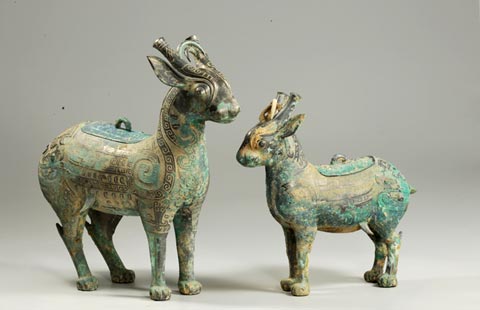
 Top 10 China archeological discoveries for 2013
Top 10 China archeological discoveries for 2013
 Mummy & me in New Zealand
Mummy & me in New Zealand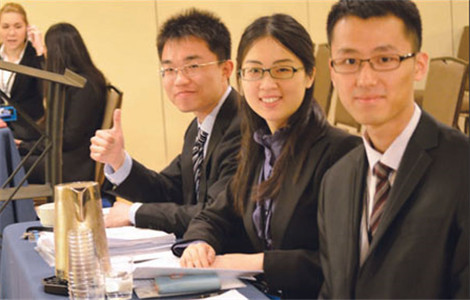
 Chinese schools vie in moot court
Chinese schools vie in moot court
 Australian divers start underwater search for MH370
Australian divers start underwater search for MH370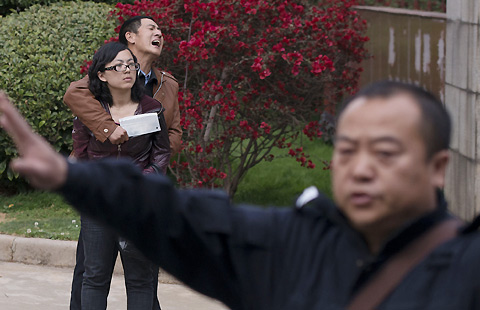
 Cleaver-wielding man subdued after tense standoff
Cleaver-wielding man subdued after tense standoff
 Pro-Russian demonstrators announce Kharkov's independence
Pro-Russian demonstrators announce Kharkov's independence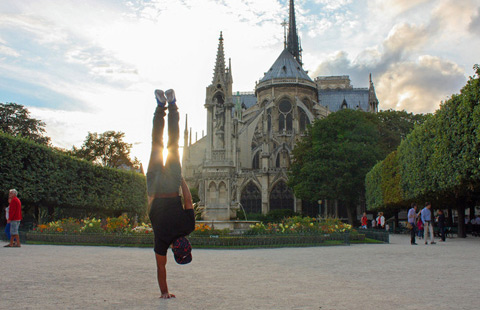
 Breakdancer 'freezes' in front of Paris landmarks
Breakdancer 'freezes' in front of Paris landmarks
 TV Debate in Boao Forum for Asia Annual Conference
TV Debate in Boao Forum for Asia Annual Conference
Most Viewed
Editor's Picks
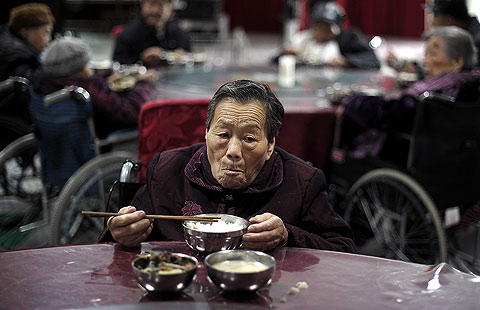
|
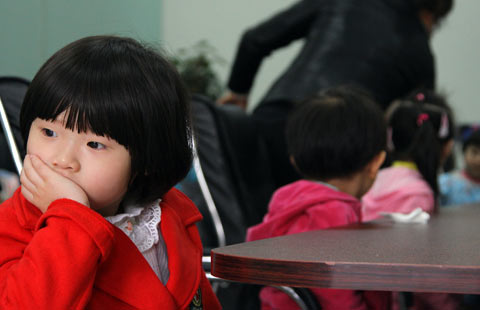
|
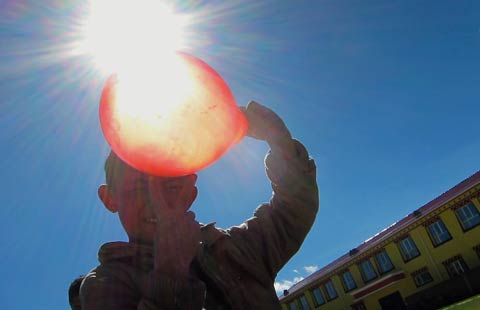
|
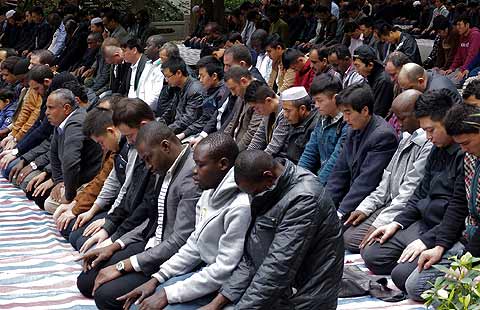
|

|

|
Today's Top News
Ships sale to Taiwan 'unlikely'
Hagel gets closer to PLA
21 injured in Pennsylvania school
World leaders join Weibo
Beijing could lead clean-energy debate
China's mixed stories in quest for resources
Crimes of Hirohito on stage: 'We can't let it happen again'
Cross-border deals headed south?
US Weekly

|

|
